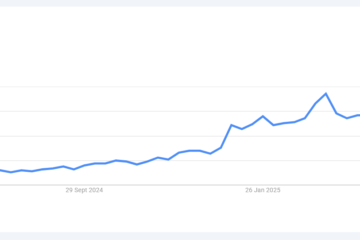“Language is not just a combination of irrelevant sounds, clauses, rules and meanings. It is a fully integrated system that is bound to context and conduct.” – Kanth l pic
The article continues below
There are accents in the web. So our design systems should also.
Design system as living languages#Section 2
The design system is not a component library – they are living languages. Token There are phonam, Ingredient Are the words, Sampling Are phrases, The layout There are phrases. The conversations we talk with consumers become our products stories.
But what we have forgotten here is: the more fluent language is spoken, the more it can be supported without losing the meaning. In Scotland, English is different from English in Sydney, yet both are indifferent English. The language is in line with context, keeping the basic meaning. It may not be too clear to me, a Portuguese speaker from Brazil, who learns English with American accents, and lives in Sydney.
Our design system should work similarly. Strict restrictions on visual rules produce broken systems that are broken under the pressure of context. Flow system breaks without breaking.
Permanent temperament becomes a gel
The promise of the design system was easy: permanent components will accelerate growth and unite experiences. But as the system has become solid and the products have become more complicated, this promise has become a prison. Teams file “exception” applications through hundreds. Products launch with workwrinds rather than system components. Designers spend more time defending consistency rather than solving user problems.
Our design system should learn to speak Bid.
A design bid is a design system systematic adaptation that maintains basic principles while producing new samples of specific contexts. Unlike specializations or brand themes, bids protect the necessary grammar of the system, while serving different users, environment or obstacles, increases their words.
When the perfect consistency fails#Section 3
On booking.com, I learned this lesson in a difficult way. We looked at everything-ranging, copy, button shapes, even the logo color. With graphic design education and experience -making brand style guides as a professional, I felt this shocking. Although everyone fell in love with the ancient design system of Airbon B, the booking increased into a giant without considering visual consistency.
The chaos taught me something deep: Permanent temperament is not ROI; There are solved problems.
Polaris (https://polaris-reat.shopify.com/) Our crown was a solid design language for traders on the lip top. As a product team, we were expected to adopt Polaris as IS. Then my completion team “Oh, ship!” At the moment, when we faced the challenge of creating an app for warehouse selectors, which is used on our interface, batsman Android scanners are in dimming streets, wearing thick gloves, scan dozens of items every minute, with many English understanding.
Completion of work with standard polaris: 0 %.
Every component that worked beautifully for the traders failed completely for the selectors. The white background created a glare. 44px tap goals were hidden for gloves. It took a long time to analyze the phrase case labels. The multilateral flow is confused by non -local speakers.
We faced a choice: Polaris fully abandoned, or Teach him to speak warehouse.
Birth of bid#Section 4
We chose the evolution on the revolution. Working in the basic principles of Polarus – Clearity, Performance, Permanent – We developed what we now call The bid of design:
| Jam | The fluent move | Reasoning |
| Glare and low light | Deep levels + Light Text | Reduce the glare on low DPI screens |
| Gloves and rush | 90px tap targets (~ 2 cm) | Adjust the dense gloves |
| Multi -linguistic | Single Task screens, simple tongue | Reduce the academic load |
Result: Jumped from the completion of the task 0 % to 100 %. The ship’s time fell into a shift for three weeks.
It was not customized or taming – it was a Bid: A systematic adaptation that maintains the primary grammar of Polaris while producing new words for a specific context. Polaris did not fail. He learned to speak warehouse.
Flexible framework#Section 5
In Atlasin, working on the JIRA platform – is a system in the larger Atlantic system – I emphasized to regularize this insight. With dozens of products sharing the language language into different code bases, we need organized flexibility so we built directly in our working methods. Old model – estimated requests and special approval – failing on a scale.
We developed Flexible framework To help describe designers how much they want their components to be:
| Level | Action | Ownership |
| Constant | Never adopt a change | Platform Locks Design + Code |
| Opinion | Shield in the limits | Platform smart defaults, provides customized products |
| Flexible | Extend freely | Platform behavior, defines the product’s own offer |
While re -designing the navigation, we tired each of the elements. People and global search remain permanent. Brad Kerps and context measures became flexible. Product teams can immediately see where innovation is welcomed and where there is a difference of consistency.
Decision ladder#Section 6
Flexibility requires limits. We made a simple ladder to assess when the rules should bend:
Nice: Ship with existing system components. Fast, permanent, proven.
Better: Stretch a little component. Document the change. Improve the system for all use.
Best: Proty -type first ideal experience. If the user’s test is verified, update the system to support it.
Important question: “Which option let users succeed faster?”
Rules are tools, not Occupation.
Alliance defeats uniformity#Section 7
Gmail, drive, and maps are unchanged Google – yet everyone speaks with their own tone. They gain unity through common principles, not clone ingredients. An additional week of discussion on the color of the button is about $ 30 in engineer time.
Alliance is the result of a brand. Flow is the result of the user. When both collisions, with the user.
Governance without gates#Section 8
How do you maintain harmony while activating the bid? Behave your system like living words:
Document each deviation – For example, screenshots and bid/warehouse before/after the rational principle. MD
Promote joint patterns – When three teams adopt a bid independently, the IT IT is the main inclusion.
Outdated with the context -Retire old idioms through pamphlets and migration notes, never a big bang is clean.
A living dictionary is better than a frozen rule book.
Start Little: Your First Bid#Section 9
Are ready to introduce bids? Start with a broken experience:
This week: Find a user flow where perfect consistency prevents the completion of work. Mobile users struggling with desktop size components can be, or leakage does not require your standard samples.
Document of context: Does the standard patterns here fail? Environmental obstacles? User capabilities? Task emergency?
Design a systematic change: Pay attention to the aesthetics. If gloves are a problem, big goals “are not” breaking the system ” – they are serving the user. Earn the variations and make them deliberately.
Test and measurement: Does change improve the work complement? Time of productivity? User satisfaction?
Show savings: If the bid also frees half the sprint, the fluent has paid for itself.
Beyond the library of ingredients#Section 10
We are no longer managing the design system.We are cultivating design languages. Languages that grow with their speakers. Languages that prepare the accent without losing meaning. Languages that meet human needs on aesthetic ideas.
Warehouse workers who had gone from 0 to 100 task task did not care that our buttons broke the style guide. He cares that the buttons eventually work.
Your users feel the same way. Allow your system to speak their language.



0 Comments